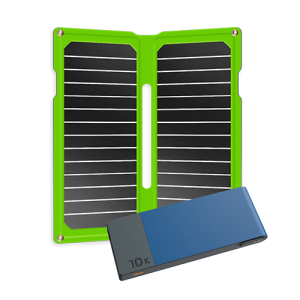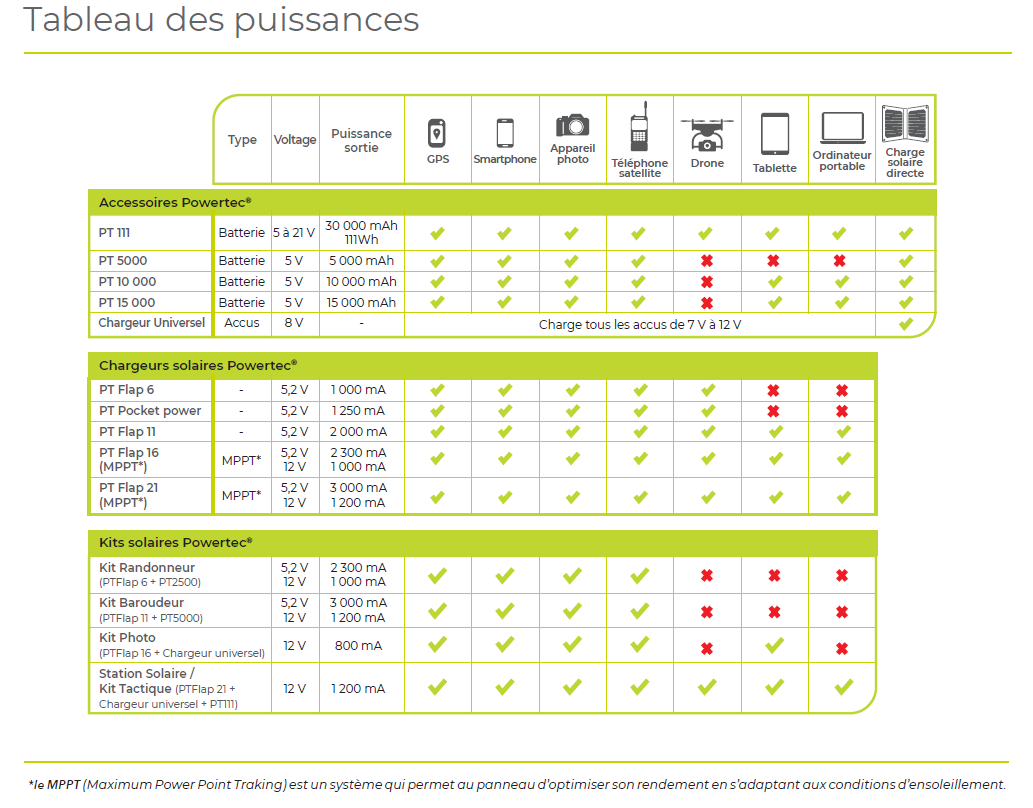Mini Cart
Introduction
The solar power bank has become an indispensable accessory for people on the move, wishing to recharge their electronic devices without relying on an electrical outlet.
In this article, we’ll look at the benefits of solar power banks, the criteria for choosing one and the best options available on the market. We’ll also answer the most frequently asked questions on the subject.
1. What is a Solar Power Bank and how does it work?
A solar power bank is a portable battery equipped with solar panels that convert sunlight into electrical energy. This energy is then stored in the battery and can be used to recharge electronic devices such as smartphones, tablets and even some laptops.
How it works
1. Solar panels capture sunlight and convert it into electrical energy.
2. The electrical energy is stored in the solar power bank’s battery.
3. When your devices need recharging, you plug them into the solar power bank 4.Using a USB cable or other suitable connector.
Buy Now
2. Advantages of Solar Power Banks
Ecology and energy savings
Reduce your electrical energy consumption and therefore your ecological footprint. Solar power is a clean, renewable energy source. What’s more, you’ll save money by not having to use electricity from the grid to recharge your appliances.
Energy independence
With a power bank, you’re no longer dependent on an electrical outlet to recharge your devices. This can be particularly useful when traveling, hiking or in the event of a power cut.
Versatility
Solar power banks are compatible with a wide variety of electronic devices, making them extremely practical. Some models feature USB or USB-C ports, or even specific sockets for laptops.
3. How to choose?
Battery capacity
The battery capacity is expressed in milliampere-hours (mAh). The higher the capacity, the more devices the power bank can charge before being recharged. For example, a 10,000 mAh battery can recharge a standard smartphone 3-4 times over.
Solar panel power
They are measured in watts (W), determines how quickly the solar power bank is recharged by sunlight. The higher the wattage, the shorter the recharge time.
Number and type of ports
Depending on your needs, check the number and type of output ports available on solar power banks. For example, if you have a laptop that requires a specific socket, make sure the model you choose offers one.
Weather resistance
For outdoor use, opt for a water- and dust-resistant solar power bank. Some models also feature an anti-shock coating for added durability.
The best Powerbank on the market
20,000 mAh capacity, 5W solar panel, 3 USB ports
An excellent choice for those looking for high battery capacity and efficient solar charging. It’s ideal for travel and outdoor activities, thanks to its resistance to water and dust.
15,000 mAh capacity, 3W solar panel, 2 USB and USB-C ports
It’s a versatile model with USB and USB-C ports, allowing you to charge a variety of devices. Its battery capacity and solar power make it a solid choice for everyday use.
10,000 mAh capacity, 2W solar panel, 2 USB ports and flashlight function
It’s a compact, lightweight option, ideal for hiking and traveling. Its built-in flashlight function is a welcome bonus for night-time activities.
5. Maintenance and precautions for use
Maintenance
To ensure the long life of your solar power bank, follow these recommendations:
- Clean the solar panels regularly with a soft cloth to remove dust and dirt.
- Avoid exposing it to extreme temperatures or humidity for long periods.
- Recharge the battery at least once every 3 to 6 months if you don’t use it regularly.
- Precautions for use
- Do not disassemble the solar power bank, as this may cause short-circuits or irreversible damage.
- Use only cables and adapters compatible with your devices and the solar power bank.
- Keep the solar power bank out of the reach of children.
Frequently asked questions :
1. How long does it take to recharge a solar power bank?
The time it takes to recharge a solar power bank depends on the power of the solar panels and the capacity of the battery. On average, it takes between 10 and 40 hours for a full recharge, depending on sunlight conditions.
2. Can I recharge a solar power bank indoors?
Recharging indoors is possible, but less effective than outdoors. Natural sunlight is more intense, so recharging is quicker.
3. Is it possible to recharge a solar power bank and a device at the same time?
Some solar power banks allow you to charge both the battery and a connected device at the same time. However, this feature may reduce the efficiency of solar recharging.
4. How do I know if my solar power bank is compatible with my device?
Check your device’s specifications to make sure output ports and voltages match. Most solar power banks are compatible with smartphones and tablets via USB ports.
5. Are solar power banks dangerous for electronic devices?
No, they are designed to safely recharge electronic devices. However, it is important to use compatible cables and adapters to avoid any risk of overheating or short-circuiting.
Conclusion
Solar power banks are an excellent way of recharging your electronic devices ecologically and independently. By choosing the right model for your needs and following the care and maintenance instructions, you’ll benefit from this renewable and portable energy source for a long time to come.


